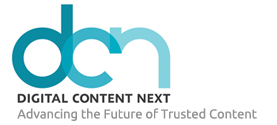There is no doubt that 2020 was a year for the books. The pandemic turned nearly every aspect of life upside down, affecting many industries. While some were severely hurt, others greatly benefited. The advertising industry was no different, experiencing ups and downs.
Looking ahead to this new year, we predict there will be some major turning points, particularly in OTT, social media, video and conferences. Here at MediaRadar we’ve taken a look back at 2020’s unique advertising trends and predicted what 2021 will bring.
The OTT shakeout will play out faster than expected
Last year, we predicted that the numerous OTT launches would lead to a crowded, overly competitive market. Since then, we’ve seen a significant movement of advertisers to the new platforms and the pandemic has been a large catalyst of this shift.
For 2021, our prediction remains, although we think the process is accelerating. What’s causing it to speed up?
Competition in the OTT space is bruising. HBO is going to get a seat at the table, as they’re bringing blockbuster movies directly to their platform. Like a game of poker, they are raising the stakes. Moving forward, it will be more expensive for others to win if they don’t match the quality and breadth of offerings currently in the market.
Disney and Netflix are also consuming a disproportionate share of the winnings, with Disney’s growth happening much faster than expected. These platforms’ tremendous success, however, may leave fewer consumers able to buy alternate paid subscription services (SVOD), as households won’t subscribe to every OTT service.
Many of the top firms, including Disney and AT&T, are saddled with meaningful debt. This will encourage firms to sell their under-performing or less-core assets. For example, AT&T sold Crunchyroll to Sony in December 2020. Wall Street Journal reported, “Crunchyroll is the latest asset that AT&T is cutting loose to trim the debt load.”
Years worth of change in the OTT space were squeezed into 2020. This means the endgame will arrive faster than anticipated.
Social will remain powerful in 2021, but year-over-year growth will be tepid
While 2020 disrupted many types of business models, social media was not one of them.
In 2020, Facebook’s ad sales performance was tremendous, as seen in its stock ending the year up 83% from their March lows, while popular app TikTok claims to have reached almost 20% of Americans every single week.
But, 2021 will offer fewer advantages. Take away the mandatory stay-at-home quarantine, as well as the most generous presidential election ad spend ever, and what is left could be more challenging. There could also be a hostile regulatory environment, with bi-partisan support to curb ad targeting. Apple has already promised to disable the ability to track and target users across apps on iPhones in early 2021.
Time spent on video will decline
Online video certainly benefited from the increased time people spent at home during the quarantine. But, as the population is vaccinated, the amount of time spent away from our screens will increase.
Based on Alphabet’s quarterly filings, YouTube revenue was up 30% year-over-year (YoY) in Q2 2020 to $5B. In the summer of 2021, it will be a challenge to reproduce these numbers, especially in Q3 when people spend more time outdoors.
The return of in-person events will bring much-needed relief
Live events have proven to be the hardest area of life to migrate online during the pandemic. This is not a case where people feel virtual has been a positive substitute.
In business, live trade shows allow for professional and social interaction, facilitating deal-making, etc. Without the ability to meet in person, the demand for lead generation has increased significantly.
Luckily, we expect the second half of 2021 to be a major turning point for the conferences industry, with in-person events returning en masse. Informa, one of the largest event companies in the world, saw its stock price shoot up 21% in a single day when the efficacy of early vaccines was announced.
Advertising trends will look more like 2019 in the second half of 2021
The popular logic today is that the world has changed and, even when vaccines are administered and the world begins to emerge from Covid-19, we will not be returning to what we knew before. However, it will not be as radically different as some have hypothesized.
In 2020, we saw markets like live events, travel, and restaurants drastically reduce their ad spending as they cut costs to survive. Meanwhile, children’s toys, food subscription boxes, RV’s, and communication services like Microsoft Teams accelerated their advertising to capitalize on opportunities in the market.
However, we do not expect this to last, especially as we get into the second half of the year. For example, we expect travel companies to begin advertising soon, to attempt to lure consumers and capitalize on pent-up demand. China’s Golden Week holiday offered a preview, as over 500M people traveled during the holiday, 80% of pre-Covid levels.
Looking ahead
Not only will 2021 bring the much-needed Covid-19 vaccine, but also some much-needed relief for businesses of all kinds. In the advertising space, we look forward to seeing the industries most impacted by the coronavirus return to more stable advertising spending.
The “Streaming Wars” will be interesting without quarantined consumers, the return of live, in-person events will restore a key part of the B2B market, and much more. Most importantly, we look forward to the breath of fresh air that this new year will undoubtedly bring.

























